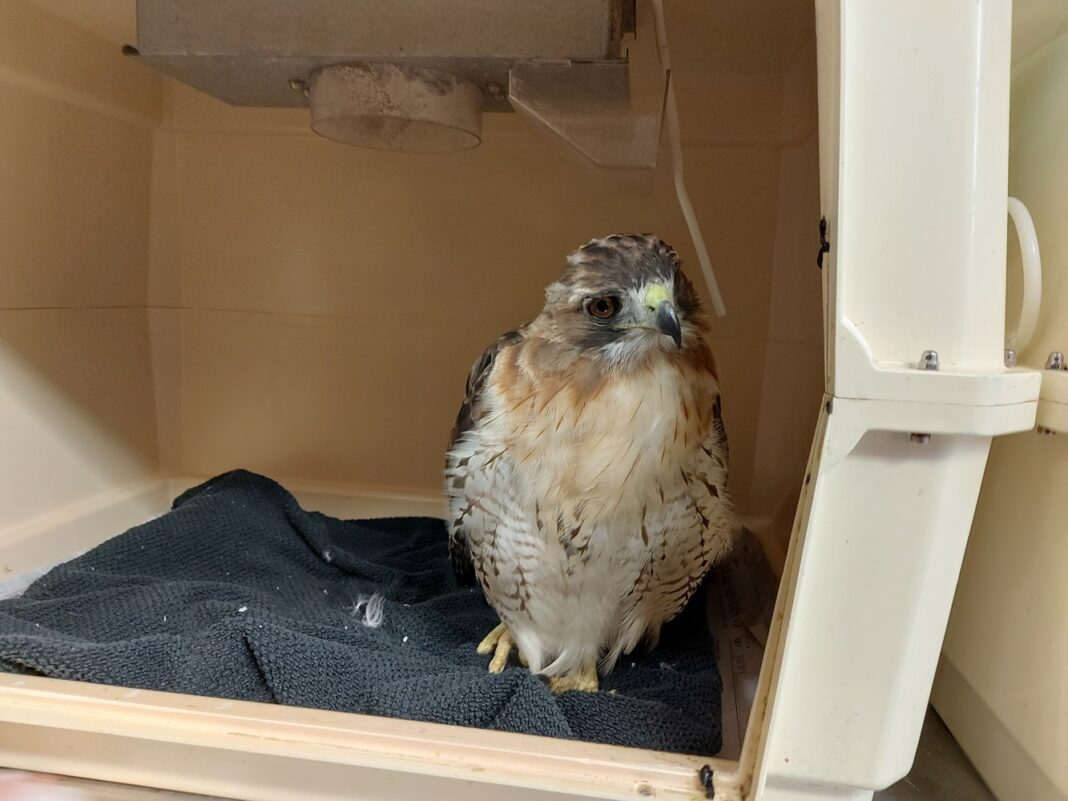A poisoned Red-tailed hawk – in care at Woodlands Wildlife Sanctuary in Minden Hills – has resulted in renewed calls for Minden Hills and other County townships to ban the use of rodenticides.
While the hawk was found in distress in Havelock, Allison Hansen of Minden, who is co-founder and campaign director for Rodenticide Free Ontario (RFO), said “this is happening with increasing frequency.”
Hewson made a delegation to Minden Hills council in January of 2023. She warned them about the dangers of the poisons and asked for a ban. Council voted to have staff put together a report and bring it back to council. However, that did not happen. Hansen said her dog died after ingesting a poisoned mouse.
“Other municipalities I have engaged have acted faster and been more responsive in recognizing that these poisons are inhumane, dangerous and ineffective,” she said.
Hansen said RFO is a small, grassroots organization of people who have dealt with personal cases of rodenticide poisonings and are working to move reform to protect people, wildlife, companion animals and the environment from rodenticides. She says they have helped municipalities move forward with their own rodenticide-free initiatives.
The hawk at WWS has been named Slater.
Woodlife Wildlife Sanctuary said the hawk was found on the side of the road, “barely able to stand.” A volunteer driver and her husband answered their call for a ride and brought him to the sanctuary as quickly as possible.
“The hawk was starved for sure, but his behaviour indicated there was more to the story. Normally, we would surmise that he had been clipped by a car, and had head trauma. But there were no signs of that,” WWS’s Monika Melichar said.
They gave him fluids, placed him in a warm incubator as he was still chilled, and watched for signs to tell them what was ailing him. When he defecated, there were symptoms of internal bleeding.
With the help of Shades of Hope Wildlife Refuge, Melichar said they were able to confirm he had been poisoned, most likely from a mouse dying from rodenticide-laced bait.
“Immediately, we started him on a Vit K protocol to bind and help flush the toxin out of his body. We can only hope that we’re not too late to save him,” Melichar said.
“Indirect rodenticide poisoning of our wildlife is happening all the time, but we just don’t see it. Many of these affected animals die a quick, yet painful death, out of sight and out of mind of the people that wish to rid their premises of rodents. Sadly, these deadly toxins spread out across the environment, like ripples in the water, and poison not just the targeted animal, but those that prey on them. One infected mouse can harm a mink, that can then harm a fox, and then a vulture, and on and on,” Melichar said.
She added it’s because the toxin can remain in the body for a very long time, and accumulate, until it is too much for the wild animal to handle. “The levels reach a critical point and then it’s all downhill from there.”
Melichar said they are determined to save the hawk, and are encouraged by even his slightest improvements. As of Oct. 23, she said Slater was on the mend.
“He’s standing more often and was able to keep down some solid food. It will be a long haul for him to completely rid his body of this deadly toxin, but we’ll do our best to pull him through.”
For more information on keeping rodenticides out of the environment, go to rodenticidefree.ca. To donate towards Slater’s care, go to woodlandswildlifesanctuary.ca/donate.





